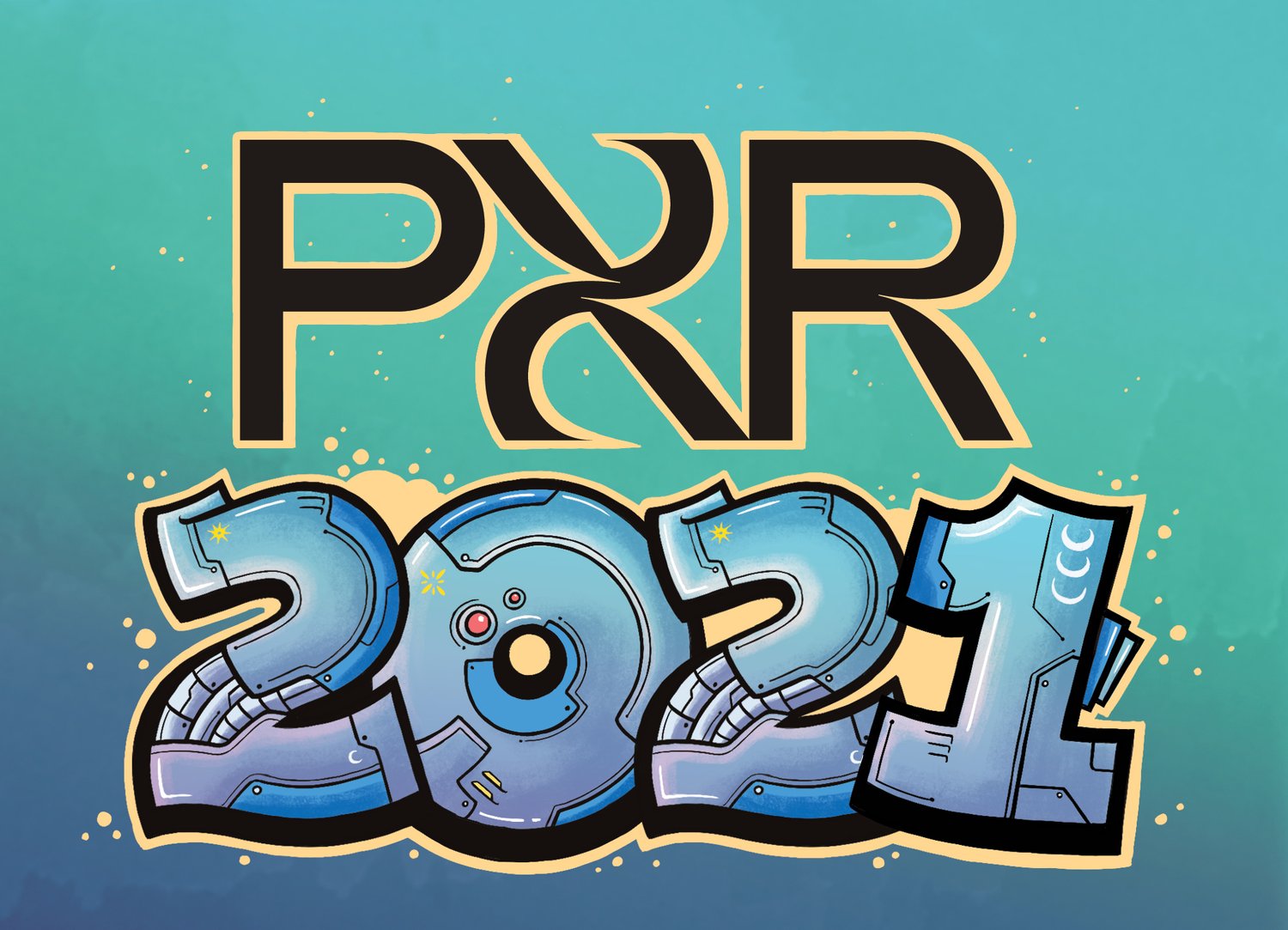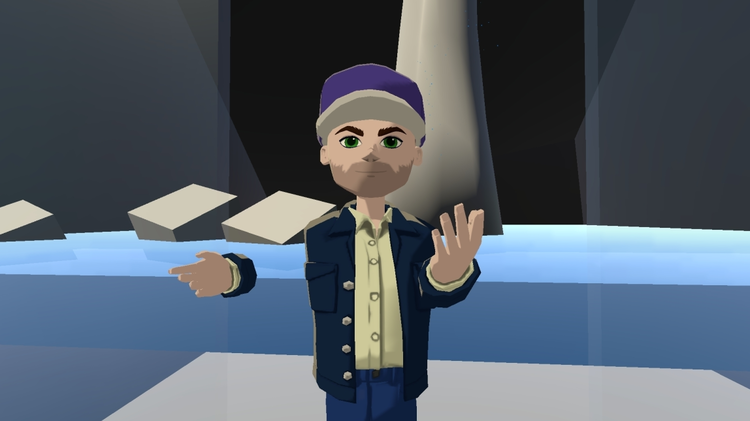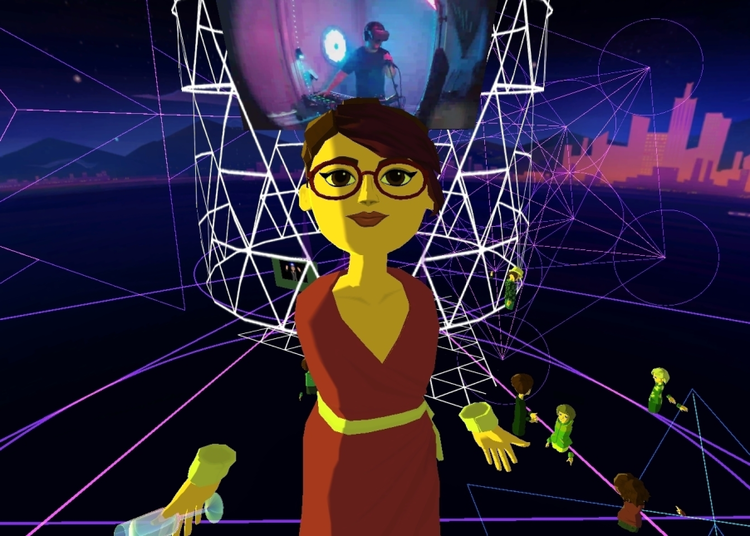TLDR: PXR Was Cool

[TLDR is an abbreviation for ‘too long; didn’t read’, usually followed by a brief synopsis]
If the pandemic has taught us anything in the last year and a half, it has been how to adapt.
While an inability to gather has seen the closing of countless theatres, some companies have turned to the internet as a means of staying afloat. By broadcasting performances and moving programming online, digitizing became a way to generate income and engage with audiences until the in-person became available.
However, to put it plainly; where these companies were using technology to learn to walk, others have been running for a long time.
Produced by Single Thread Theatre in collaboration with Electric Company Theatre, this past November saw the digital Performance and XR Symposium (PXR) returning for its second year. Over the course of 8 days, participants from across the world gathered in virtual reality (with the headsets and everything) to discuss projects, practice, and theory. Using your own avatar to navigate the space and microphones to talk in real time, the festival was a grand feat of connection, despite lockdown restrictions or continental borders.
Although I was only able to engage with the festival from a desktop, the parts I did catch were quite illuminating. What’s more interesting is that each one seemed to be using the VR platform in different ways. In recounting my experience, I plan to investigate the nature of the festival and ask why it was held in the way that it was. And I will be doing it in a numbered list, because lists are always more fun.

1. International connection from the comfort of your own home
For anyone who has been in isolation over the last year, you may have had to video or voice call someone who was far away and couldn’t physically access. In this way, technology connects us to each other without having to go through whatever journey it would take to do so in person. Then what does this mean for a festival that doesn’t demand the physical presence of its attendees?
For starters, time zones had to be kept in constant consideration. With people coming from all over the world, events would range from dawn to dusk and everything in between. Most sessions were recorded and archived for sharing, in case things went past one’s bedtime.
Indigenous filmmaker Nyla Innukshuk also brought up a vital point in discussing her work at a casual-style Q&A on day 2. With travel being especially restricted for some northern Indigenous communities, technology could be a way in which to artistically engage and develop ties when physically visiting is not an option. However, she noted, this becomes difficult when certain technologies are quite expensive and to even engage with something like virtual reality or even stable Wi-Fi comes at a cost.
While the global scope of attendees made for a fruitful discussion, it also begged the question of who financially gets to take part.
2. Actively testing theories of storytelling and alternative types of thinking
Even before I watched a recording of the keynote speech delivered by Voices of VR podcaster and philosopher Kent Bye, I had heard about it from numerous sources. What I witnessed did not disappoint. Not only did Bye break down virtual reality into four workable categories of experience, he broke down concepts of time and reality as well, and in a way that was inquisitive rather than patronizing.
Of my takeaways from the talk, the one that I think informed the remainder of the festival was his concept of environment-based experiencing. He argued that the ways in which we think are inseparably instructed by our surrounding environment, affecting how we learn, act, and live. This can be seen in the ways people act across different geographies across the world.
He then went on to ask, how then is the mind shaped when it is learning in a virtual environment, where the possibilities may be far greater than one’s physical environment? What can be discovered in the virtual plane?
Not only did this make me stop and consider the possibilities of virtual reality, but it also set the tone for the festival beautifully. Here was a group of people looking to shape that plane and uncover what it has to offer for performances and beyond. In framing it this way, PXR attendees were actively testing this idea and developing new ways of thinking.

3. Engaging differently with notions of self and others around you
Speaking of a shift in perception as a result of a virtual platform, no PXR experience was complete without creating a 3D avatar of yourself with which to move around the space and interact with things. No matter how old I get, I still feel the utmost excitement when asked to design an avatar, feeling reminiscent of my Sims days. However, unlike my attempts to recreate myself and play out different scenarios, some attendees took naturalism out of the equation completely, such as the use of blue and green skin.
I wonder how much the choice of appearance factored into the comfortability of the hosts and participants—which seemed to be at a constant high. Is there a decreased social pressure when meeting online through a virtual avatar, versus in person or over a group Zoom call?
I would argue that yes, there is, and events such as the Theatre Passe Muraille open discussion on Day 5 suggest the same. In a laid-back session, the company operators explained their plans for their Backspace renovations and how technology was helping their planning and workshop process. The floor was then opened up to questions or suggestions, for which people queued in a virtual hand-raising line to ask.
While this wasn’t the best use of the virtual platform in my opinion and could have reasonably been done using a Zoom call (safe for the pictures that were virtually suspended on the ceiling), the session was relaxing and well-received. Although it’s hard to say for sure, I would attribute this to the sensory stimulation and added agency of being there virtually.
For instance, imagine you’re in a talkback where not very much is happening. If you are watching via Zoom, all you really have to look at is the person talking (or, of course, Netflix in the background). But in the land of PXR, you are able to look at this character, who isn’t the person speaking, but is representing them. Their hand gestures are synced to the actual person, translating their aura and personality online. And they can see you, too. You can also look around and see what other people are looking at. In doing this, you are engaging in a way that is not quite live but is much more present than most other means of virtual gathering.
I would wager to say that there is an added captivation factor present in virtual reality spaces, perhaps in line with what Kent Bye described as learning through virtual environments.
In trying to process all of these thoughts and come to a conclusion, it would be in two parts. Firstly, it seems that there is great work that is happening in the world of technology and performance and has been happening for many years now. Developers of virtual reality continue to create incredibly dynamic and nuanced performances, and festival spaces such as PXR are a celebration and exploration of this progress.
On the other hand, however, there is a constant tug of who is able to engage with such progress. Unless you have the spare $400 to spend on an Oculus Quest 2 VR Headset, adopting virtual space as a performance platform might be a tall order. However, in light of the connection, innovation, and comfortability present at PXR 2021, it might be worth the investment.
PXR was a festival produced by Single Thread Theatre and Electric Company Theatre which ran from November 13-20, 2021. For more information about the festival, check out its website here.